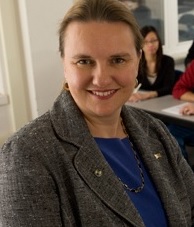
Michele J Grimm,
Wayne State University, USA
Title: The biomechanics of neonatal brachial plexus injury
Biography
Biography: Michele J Grimm,
Abstract
Approximately 1 in 1000 infants is noted to have a brachial plexus palsy at the time of birth – resulting in paralysis of the arm. About 10% of these injuries are “permanent” – with residual paralysis after 1 year-of-age. For over 100 years, efforts have been made to understand the mechanism of neonatal brachial plexus palsy (NBPP) and reduce its incidence. Due to the relatively rare nature of the injury, and the sensitivity of studies involving pregnant women and infants, typical experimental methods in injury biomechanics have not been appropriate for NBPP. In the past 15 years, modeling techniques – both computer physical models – have been developed to gain greater insight into NBPP injury mechanisms. But the development of models that cannot be fully validated presents its own challenges. Both computer and physical models have demonstrated that significant stretch of the brachial plexus occurs both as a result of the natural, maternal forces of delivery (uterine contractions and maternal pushing) and any assistive traction applied by the clinician. Available data indicates that stretch due to maternal forces alone is sufficient to cause permanent NBPP in some infants. Currently, there is no way to characterize clinically which individuals will be more susceptible to nerve injury than others. This presentation will review the current state of the art with respect to models of NBPP, with particular focus on the development of computer models, in addition to the current data regarding nerve injury thresholds. The gaps in knowledge that deserve to be addressed will be identified.
